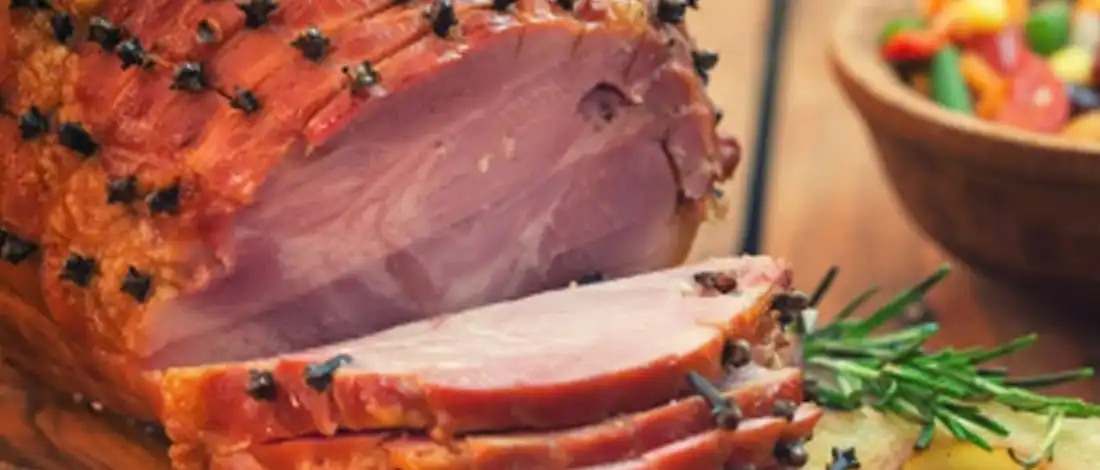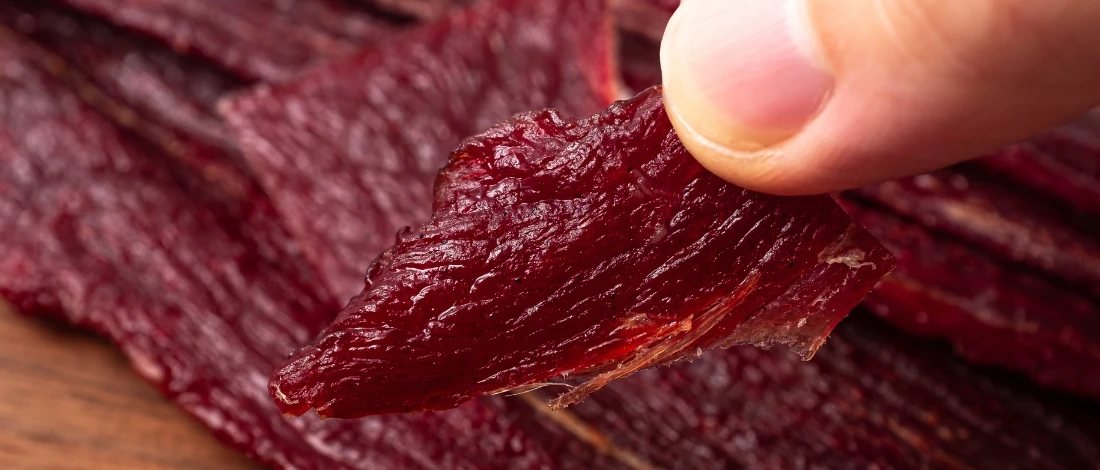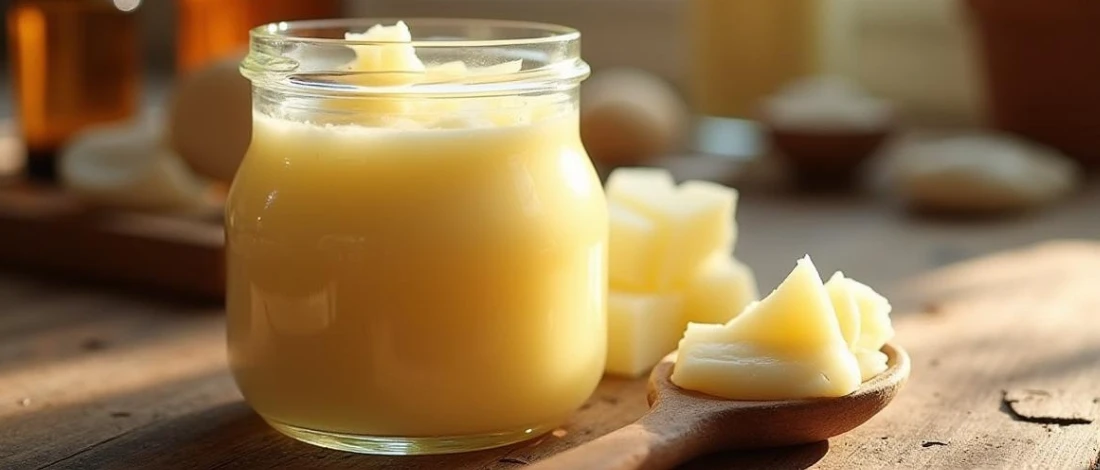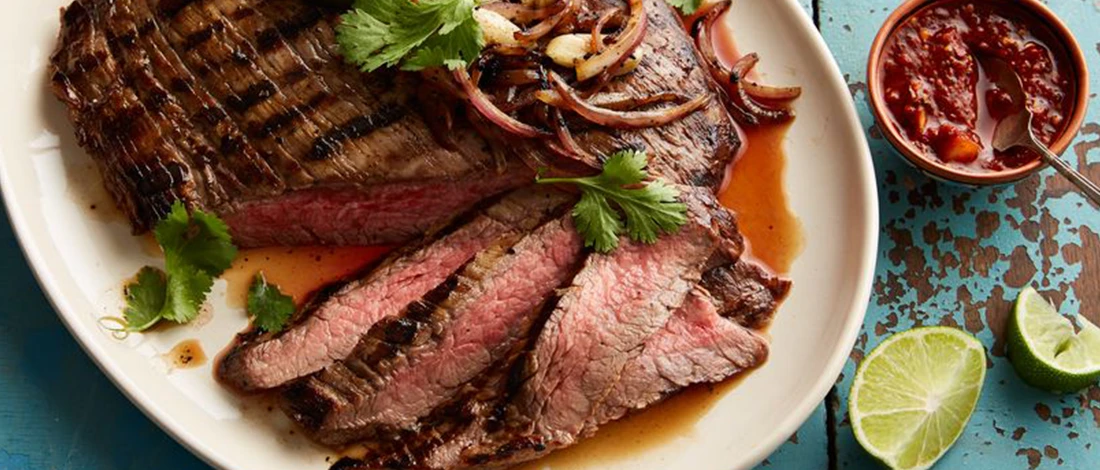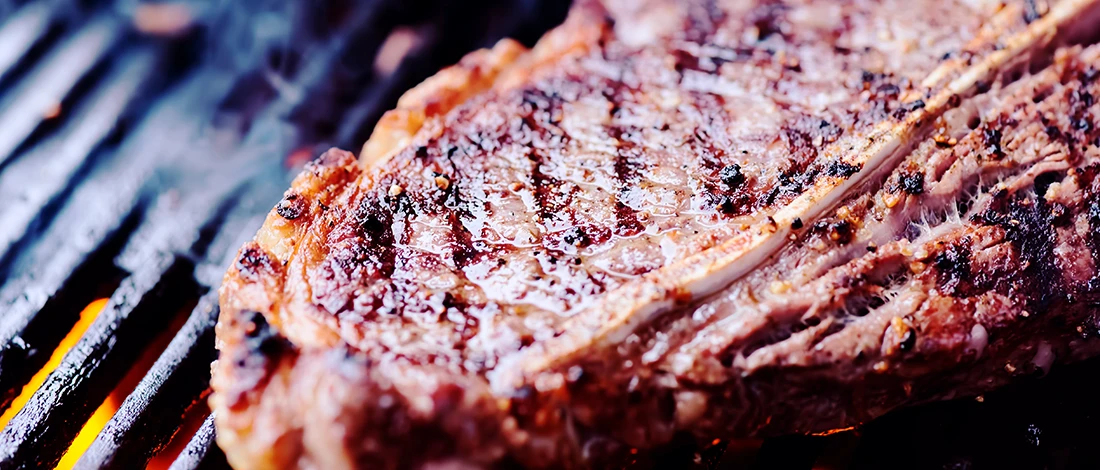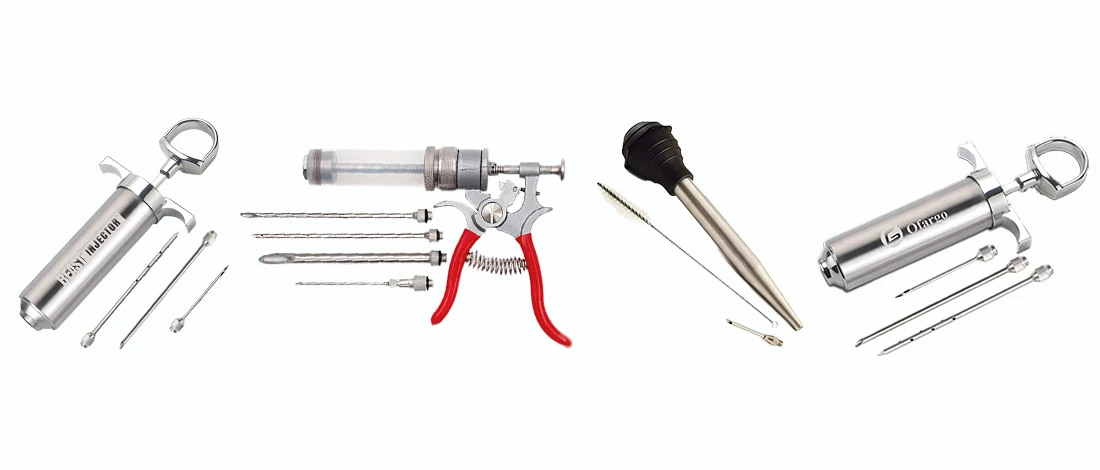As a carnivore devotee, fajita meat is one of my go-to Mexican recipes. It's a Mexican food that’s protein jammed and easy to make.
At Carnivore Style, we love sharing simple, flavorful meals that fit perfectly into a meat-based diet.
Today I'll share how to cook beef fajitas, the best cuts you should buy, and great tips for making finger-licking fajitas.
Let's get started.
Quick Summary
- Cooking fajita meat involves slicing the meat against the grain, marinating it, and frying it with vegetables in a cast iron skillet.
- The best cuts for fajita meat include skirt steak, flat iron, flank steak, sirloin steak, and hanger steak, each offering unique flavors and textures.
- Fajitas can be served with guacamole or Spanish rice.
The Best Way to Cook Fajita Meat

Most fajita recipes call for the following:
- Meat: beef, chicken, or pork
- Fajita veggies: bell peppers, onions, garlic
- Marinade (fresh lime juice or vinegar)
- Fajita seasoning (Worcestershire sauce, chili powder, red pepper flakes, and onion powder)
The cooking process is more or less the same regardless of the meat you use for your beef or chicken fajitas.
This section will look at an absolutely delicious steak fajitas recipe.
- On a cutting board, slice steaks against the grain and put the thin strips in a marinade of your choice. Marinate overnight or for at least 60 minutes if you're busy.
- Chop all your vegetables (peppers and onions) and marinate them as well. Use the same marinade you used for the meat.
- When it's time to cook, heat a large cast iron skillet over medium-high heat. Add olive oil and fry the veggies until tender.
- Remove the veggies and throw in your meat; fry these up for about 10-15 minutes until cooked. You can use a meat thermometer to check for a temperature of 170°.
- Add back your peppers and onions and mix well. Here, you can garnish it with kosher salt and fresh cilantro and saute it for about 5 minutes.
- Serve with your favorite side dish, like corn tortillas.
If you have some leftover fajitas:
- Serve them over corn flour tortillas with parmesan and other garnishes to make excellent nachos.
- Wrap leftover fajitas onto warm tortillas with cheese to make a fajita quesadilla.
- Alternatively, serve your portions bowl-style over a layer of Mexican Quinoa, risotto, or authentic red Spanish rice.
5 Best Cuts For Fajita

If you're trying out steak fajitas and want a unique, flavorful experience, here are the five best cuts that'll be a hit.
1. Skirt Steak
Skirt steak is a tasty, thin cut from the diaphragm between the abdomen and the chest.
There are two kinds of skirt steak for fajitas:
- The inner skirt is located on the inner chest wall of the cow. It is wider and yields a chewier texture.
- The outer skirt is from the outer chest wall. It is darker and more mineral-flavored.
Always cut your skirts against the grain for more tenderness and flavor that’ll match your peppers and onions.
2. Flat Iron

The flat iron cut is a less popular choice for fajitas. However, it is feasible to turn it into a delectable dish.
This cut of meat originates from the cow's shoulder, making it a little tougher than the other alternatives on this list.
The good thing is that fajita recipes are a fantastic way to make tougher pieces more pliable by thinly slicing, marinating, or dry rubbing them.
3. Flank Steak
The flank steak is positioned just beneath the loin and is a component of the stomach muscles. Although this cut can be a bit tough, it is delicious when cooked correctly.
I love the gritty texture of flank steak, which is ideal for lapping up the marinades used when making fajitas.
4. Sirloin Steak
This one looks more like skirt steak, but its texture leans towards the flank steak. Therefore it's an excellent meat for fajitas if you can't get your hands on flank or skirt cuts.
I find that it also has a beefier test than other cuts, so it's a top choice for beef fajitas.
5. Hanger Steak
A hanger steak is a cut of meat from the top abdomen of a cow. Because of its tenderness, it is regarded as an excellent choice for fajitas. It's also tender enough to slice into slim strips for a fantastic fajita dish.
Tips For Making the Best Fajita

Fajita is one party-perfect meal that is easy to make and super delicious. Here are four tips to up your fajita-making game.
1. Cut Correctly
If your steak fajitas are leathery and chewy, it's probably because you chopped the steak the wrong way.
To avoid this, ensure you slice the meat against the grain. Cutting against the grain helps to tenderize the cut a little bit.
Do this to all the meat you use for your fajitas, either beef or chicken.
2. Marinade As Needed
I recommend marinating your meat overnight for extra tenderness. But if you're short on time, at least 60 minutes does the job.
Remember to use acidic (vinegar) or lime juice marinades that tenderize the meat by disintegrating its fibers. This is crucial when making tasty steak fajitas, so don't overlook it.
"If you're using citrus marinades (pineapple juice), find the right balance of the liquids. Using excess marinades can slowly cook up the meat, and it'll turn into a Ceviche instead."
- Frank Johnson, Executive Chef
3. Use Different Spirits
This is particularly important when marinating tougher cuts. Use different spirits like tequila or gin to tenderize the meat further.
But when firing up the grill, be careful, as these are highly flammable liquids.
4. Spice Up Your Sour Cream
Because fajitas are typically served with sour cream, up your serving game by adding a little cinnamon spice mix to your cream.
Cinnamon is an outstanding choice for an extra earthly kick to your fajitas.
Side Dishes For Fajita
Here are my top favorite side dishes for beef fajitas:
- Mexican Guacamole
- Roasted potatoes
- Fresh tortilla chips
- Sour cream
- Corn salad
- Spanish rice
- Black bean dip
Related Articles:
FAQs
How Do I Get My Beef Fajitas Tender?
You get your beef fajitas tender by marinating them for a longer time in acidic marinades and cooking well in a large cast iron skillet over medium-high heat.
How Long Should Fajita Meat Be Cooked?
Fajita meat should be cooked between 10 to 15 minutes, depending on your meat type. But I recommend cooking it to your desired doneness.
Do You Cut Fajita Meat Before Cooking?
Yes, you cut fajita meat before cooking. Remember to use a sharp knife and cut against the meat grain.
How Do You Know When Fajita Meat Is Done?
You know your fajita meat is done using a meat thermometer and ensuring it registers a temperature of 170° for well-done meat.
At Carnivore Style, we’re here to help you enjoy every meal with easy recipes and smart tips. Check out our other guides and recipes to keep your carnivore cooking exciting and delicious.


